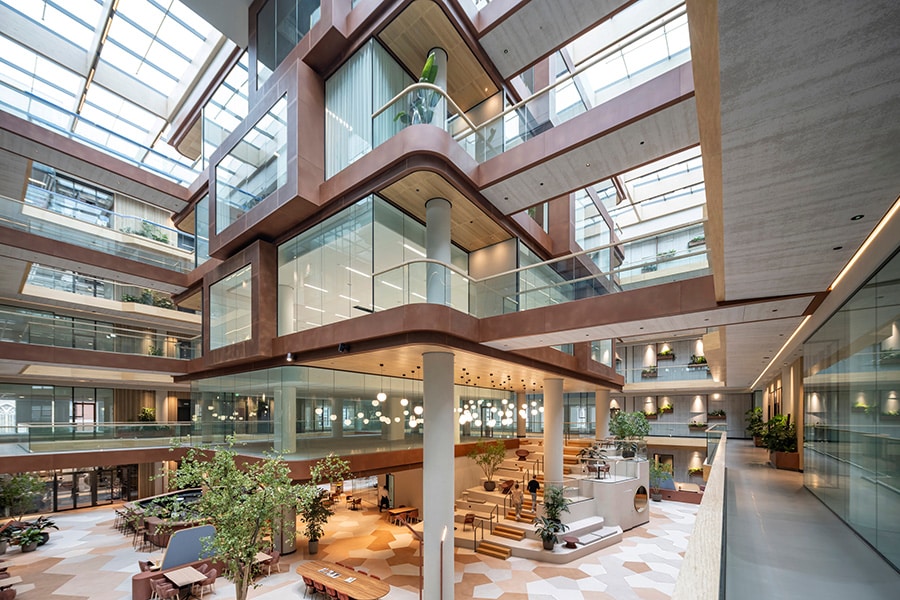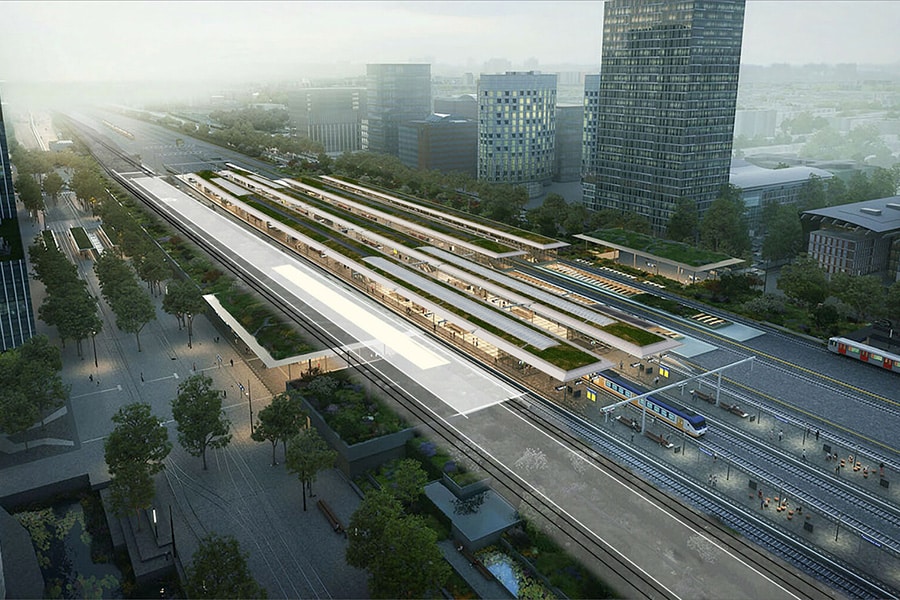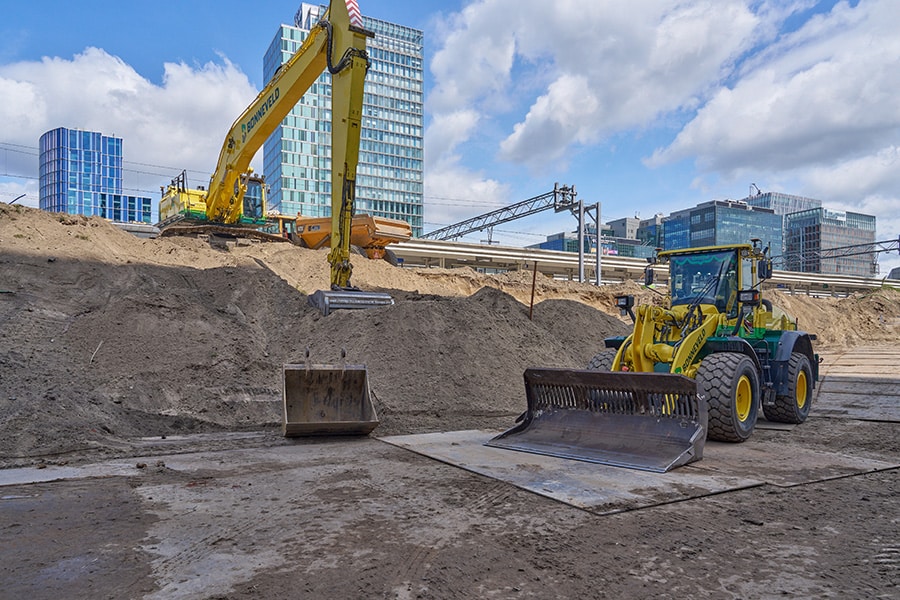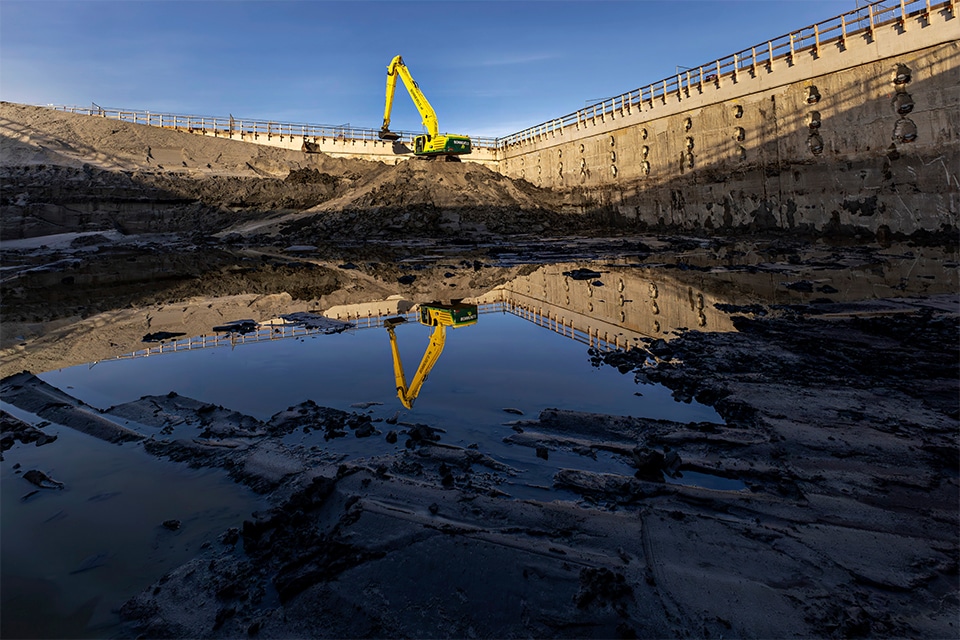
Foundations at top level
Deep walls 35 meters deep, tubular piles up to 50 meters below ground level and strand anchors up to 70 meters long for pallas reactor in petten
In Petten, the realization of a new medical isotope reactor: the PALLAS reactor, began in early 2023. The construction of this isotope reactor will be carried out in four phases, namely: the preparation of the work site (Lay Down Area), the realization of the construction pit (Pit & Foundation), the realization of the various buildings and the commissioning & handover. BESIX was contracted as the contractor for the substructure of the reactor and the construction pit (Pit & Foundation). In order to manage this construction part, from the tender phase until the execution, BESIX worked together with several comakers, such as Bonneveld, De Vries Titan and sister company Franki Grondtechnieken. Shortly before completion, we look back on the work with Jan Leen van der Vlies, which was carried out at Champions League level. Van der Vlies is not only Director of Execution at Franki Grondtechnieken, but for this work he was also appointed Project Director on behalf of BESIX. An ultimate form of comakership within one concern.
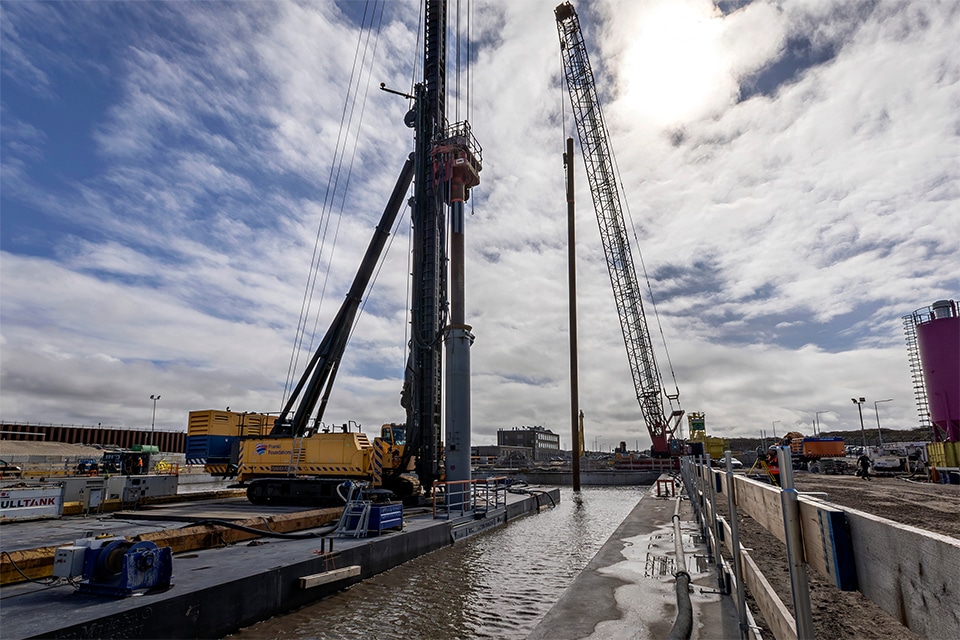
The PALLAS reactor will replace the existing High Flux Reactor (HFR) in Petten starting in 2030. The new nuclear reactor will be used for research into and production of isotopes for medical applications, with which life-threatening diseases such as cardiovascular disease and cancer can be diagnosed and treated. Thanks to the arrival of the new reactor, the Netherlands can continue to help millions of people over the next 50 years and further strengthen its position as a top global producer.
The substructure (Pit & Foundation) for the new PALLAS reactor consists of a pit 50 meters long, 50 meters wide and 21 meters deep, with an underwater concrete floor and bolted steel tubular piles. The whole will be finished with a 1.5-thick structural floor. In the dry construction pit, FCC will build the new reactor starting in late April.

Deep walls up to 35 meters below ground level
In early 2023, BESIX, Bonneveld, De Vries Titan and Franki Grondtechnieken started preparing the construction site. "We then realized the diaphragm walls on the outside of the construction pit," says Van der Vlies. "Using special grabs, deep trenches were dug in which concrete walls 1.5 meters thick and up to 35 meters below ground level were installed. In total, we realized 200 meters of diaphragm wall and poured concrete. The soil was then partially excavated, exposing the top of the concrete walls. The walls were demolished up to the reinforcement, after which we poured a large constructive ring beam that puts and keeps the diaphragm wall panels in the right connection. Then the soil was excavated 4-5 meters and three rows of strand anchors were placed from the inside to the outside. These anchors prevented the walls from coming in during the further excavation process."
String anchors up to 70 meters
A total of 162 strand anchors ranging from 40 to 70 meters were installed and tensioned, says Van der Vlies. "Once the anchors were tensioned, the construction pit was filled with water. Then several work pontoons were built in the water. From these pontoons and using our excavators, we excavated the cofferdam almost 20 meters deep."
380 tubular piles
Then it was the turn of the foundation machines with which - in a water depth of 20 meters - a total of 380 screwed tubular steel piles with a length of 33 meters and a diameter of 60 centimeters were put away. The piles are about 50 meters below ground level. "It was quite a challenge to put away these piles at this depth and to the centimeter," said Van der Vlies. "Unique to this operation were the development and use of the so-called 'Pile Cleaning Device': an auxiliary construction that was placed in advance to guarantee the correct position of the pile. In addition, this auxiliary structure ensured that all the drilling mud used to drill the piles at depth was properly disposed of. Through the application of the Pile Cleaning Device, all the pile heads were delivered neatly clean and a significant savings was made on risky diving operations."
4,000 m3 of underwater concrete in 24 hours
After installing the piles, the well bottom was cleaned up. "Following this, the pit was provided with approximately 1.5 meters of soil improvement, in the form of a coarse gravel layer," said Van der Vlies. "On top of this, over 4,000 m3 of concrete was poured in one 24-hour period. This created a 1.5-meter-thick concrete floor around the piles underwater and at a depth of 20 meters, which sealed the tub. Once all the concrete was sufficiently cured, the tub was pumped out. The 380 pile heads protruding through the floor are currently being cut and poured with concrete. We will then proceed with the realization of the upper concrete floor."
Working at the Champions League level
"We work in Petten on a nuclear construction site," Van der Vlies emphasizes. "To be able to work outside the nuclear regime, our work area is carefully shielded from the operating reactor. Nevertheless, we still have to deal with a high security level. Anyone who wants to enter the site must identify themselves, and all site employees must have a VOG. The machines we use are registered. In addition, we make sure that all machines are locked correctly after working hours and the keys are stored safely. In combination with the high environmental requirements as well as foundation engineering challenges, this is not a First Division, not an Eredivisie but building at Champions League level."
Natura 2000 area
By environmental requirements, Van der Vlies is referring to the Natura 2000 area in which the PALLAS reactor is being built. "All work is being carried out in accordance with the nature permit and the entire work site has been cordoned off with amphibian fences," he says. "Moreover, prior to our work, ecologists have removed all fauna from the work site. Using sound signals and a falconer, birds were temporarily kept out of the work area and all soil types were excavated separately as a precaution. To prevent leaching or leaching of any contaminants, all soil flows were temporarily protected with special foils and extensively tested, after which they could be processed as clean building materials."
Once in a lifetime
"Our work takes place in heavy soil," Van der Vlies concludes. "In one 52,500 m3 tub, numerous challenging techniques come together. With diaphragm walls up to 35 meters deep, piles up to 50 meters deep that are installed from the water and anchors 70 meters long, we are really on the edge of what is usual in the Netherlands in terms of foundation techniques. That also makes this project extremely interesting. You only do a project like the PALLAS reactor once in a lifetime and we are extremely proud of our contribution to it."
